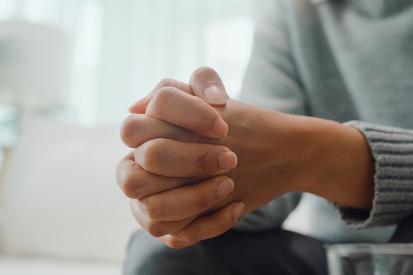What ‘Inside Out 2’ Can Teach Parents and Youth About Anxiety


In June, Pixar released Inside Out 2, an animated film that explores the emotional changes of puberty. The film takes place inside the mind of Riley Anderson, a girl who loves hockey and hanging out with her friends.
The movie is a sequel to Inside Out (2015), in which the five main characters—personified emotions Joy, Sadness, Disgust, Fear, and Anger—try to help 11-year-old Riley adjust to her new environment after her family moves from Minnesota to San Francisco for her father’s new job. At first, Riley is saddened by the move and has difficulty with the changes. In the end, the movie brilliantly explores how experiencing emotions, even unpleasant ones like sadness, is a normal and healthy part of being human, growing up, and adjusting to changing circumstances.
Inside Out 2 takes place a couple of years later. Riley, now 13, has begun the process of puberty, and with that change comes new emotions—Envy, Embarrassment, Ennui, and, most prominently, Anxiety.
Anxiety quickly becomes the dominant emotion, going so far as to boot the original five emotions from Riley’s “control center” in her mind. Based on input from Anxiety, Riley begins to make poor choices like betraying her friends and going back on her word. This series of consequences leads to Riley feeling more anxious.
The movie climaxes with a tipping point in which Anxiety is swirling out of control, leading Riley to have what appears to be a panic attack. Joy and the other emotions manage to convince Anxiety to release control, which allows all the emotions to eventually find a new equilibrium.
It’s a powerful lesson about not letting anxiety be in the “driver’s seat” of our mind and emotions.
Exploring the emotional landscape
Inside Out 2 highlights the complex world of youth anxiety. Puberty brings with it many changes, including new emotions. As their bodies change and as they experience these new emotions for the first time or experience familiar ones more intensely, it’s normal for adolescents to feel uncomfortable or anxious.
The movie’s portrayal of this inner struggle helps young audiences recognize that anxiety is not something to be ashamed of but rather a natural response to stress. Inside Out 2 also helpfully presents an opportunity for dialogue between parents and their children.
At the same time, as writer Brett McCracken has noted, Inside Out 2 does run the risk of further perpetuating our culture’s tendency toward navel gazing and giving undue weight to our interior life. He writes, “Still, there’s a point when wonder about our inner life goes beyond grateful awe and approaches unhealthy obsession. Is it possible we’re living in an era that’s too aware of the emotional drama inside, too prone to jump to therapeutic ‘processing,’ and generally too preoccupied with the self?”
Author Abigail Shrier also picks up on this point in her recently released book Bad Therapy, in which she argues that some youth are increasingly dealing with mental health problems precisely because they are so focused on mental health. McCracken adds, “Orienting our thoughts inordinately on our emotions makes us, unsurprisingly, more emotionally burdened.”
It’s a helpful reminder that we find ultimate meaning and fulfillment not by looking inward, but by looking outward toward others and upward toward God, our Creator.
The power of parental presence
The Inside Out movies offer a good opportunity for parents to discuss subjects like anxiety and puberty with their children. In the midst of a culture that is inundating children with messages about mental health and gender ideology, parents need to be a stabilizing force in their children’s lives that offers hope and truth. “Yes, things seem stressful, overwhelming, and confusing now, but you have what it takes to get through this. Life is full of challenges that require courage and faith to face them head-on. And you don’t have to go through this alone. I’ll be here for you every step of the way.”
Alliance Defending Freedom client Tammy Fournier is an excellent example of this kind of parental support. In 2020, her then-12-year-old daughter began to experience significant anxiety and depression and also began questioning her gender. Looking for help, Tammy took her daughter to a mental health center. But the center quickly took what our society, in an Orwellian twist, calls the “affirming” approach: encouraging her to reject her own female sex and act as if she is a boy. Counselors tried to push her parents to put their middle-school-aged daughter on puberty blockers and hormones. And her school officials insisted that they would use male names and pronouns even though her parents instructed them not to do that.
Tammy and her husband withdrew their daughter from the school, and within a few weeks, their daughter changed her mind about wanting to “transition,” deciding instead that she wanted to continue using her birth name and female pronouns. The Fourniers ended up filing a lawsuit against the school district for violating their parental rights, and in October 2023, a county circuit court ruled in their favor. Parents have the right to make medical decisions like this one for their children, and the court’s decision affirmed that Kettle Moraine’s policy infringed on that right. The school district later changed its policy to require parental permission.
Tammy and her husband loved their daughter and were present in her life at a crucial moment to be a source of strength, hope, clarity, and guidance. It goes to show that especially in the midst of swirling teenage emotions, the power of a parent’s presence shouldn’t be underestimated.

